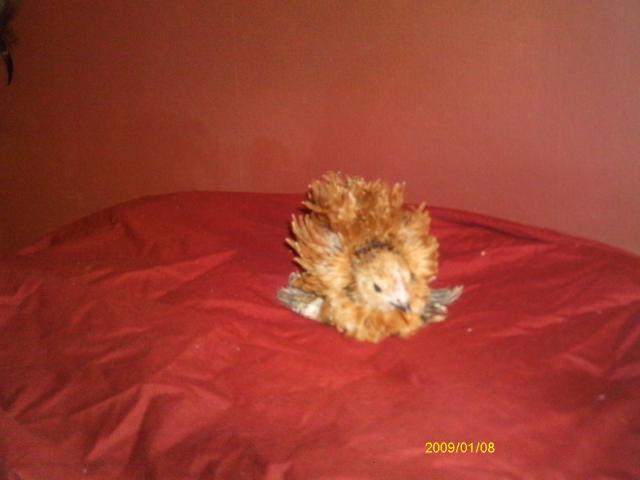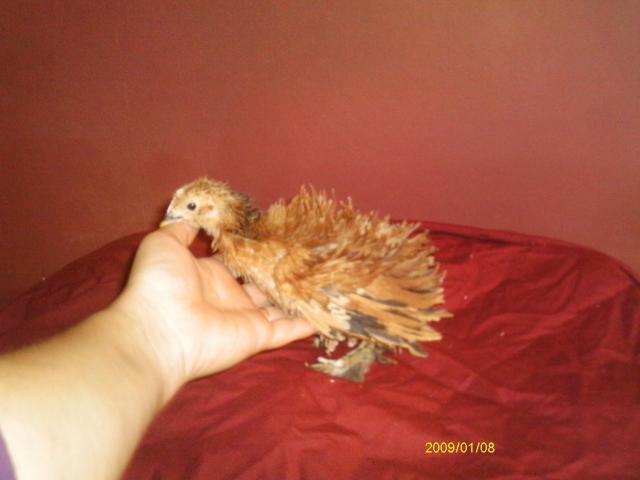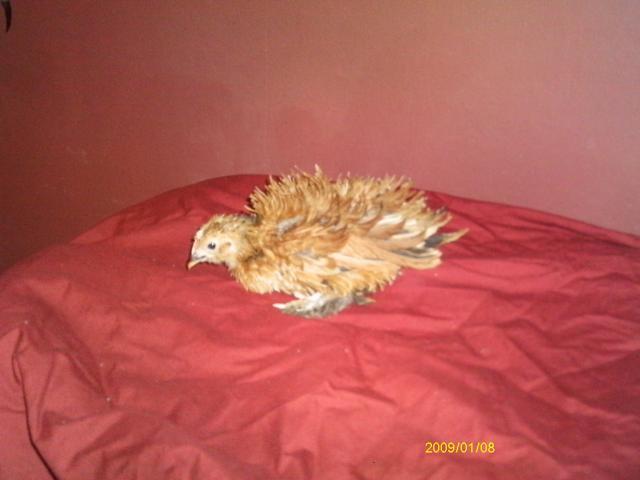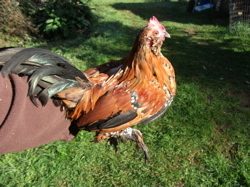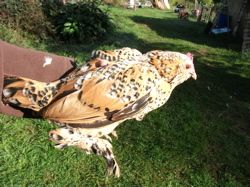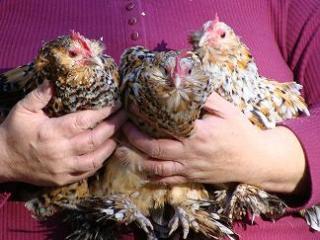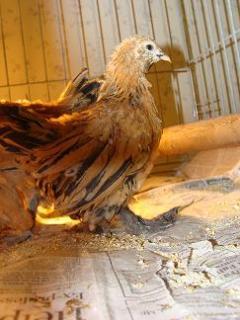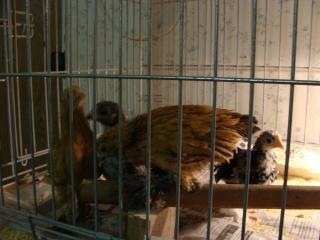Quote:
I have a coop with a thin amount of shavings, and the run is playground sand. I let mine out to play in the grass as many afternoons as I can, after work. I guess I've just been lucky because I was looking at all the millie feet last night and they are all looking good. One of my millie girls couldn't turn around without falling over because she kept stepping on her own foot feathers.
I've been selecting for heavy foot feathers when I breed because I think that duck walk of their's is adorable! Nothing is cuter to me than to see tough old Tennessee, my rooster, lalloping across the grass as he checks on his girls.
Does anyone besides me really up the protein for their d'Uccles?
Mine get regular meat fat mixed with oatmeal, and even the trimmings from pork or beef roasts when I do a crock pot Sunday dinner (we have a local grass-fed pork & beef guy in the area, so there are no hormones or antibiotics in this meat).
This is in addition to the bugs they eat free-ranging, and sunflower seed treats.
I don't even consider the protein that they get from the layer feed. I just watch how they act when they eat the leftovers, and if they're fighting over meat scraps I add more for a while. Like now, as they complete their molt. I think giving them the extra protein as they form the feathers may make a difference in feather strength.
My young birds get these treats too.
Interesting... thanks so much for the suggestion, maybe I'll try that. And I agree... the duckwalk is AWESOME. As is the bantam cochins' waddle.

Just offering what I've seen in my birds. I know too much protein is considered a bad thing by some, but in these heavily feathered breeds I can't help but wonder if it's a different level. I know it appears to be working well for me!
I have a coop with a thin amount of shavings, and the run is playground sand. I let mine out to play in the grass as many afternoons as I can, after work. I guess I've just been lucky because I was looking at all the millie feet last night and they are all looking good. One of my millie girls couldn't turn around without falling over because she kept stepping on her own foot feathers.
I've been selecting for heavy foot feathers when I breed because I think that duck walk of their's is adorable! Nothing is cuter to me than to see tough old Tennessee, my rooster, lalloping across the grass as he checks on his girls.
Does anyone besides me really up the protein for their d'Uccles?
Mine get regular meat fat mixed with oatmeal, and even the trimmings from pork or beef roasts when I do a crock pot Sunday dinner (we have a local grass-fed pork & beef guy in the area, so there are no hormones or antibiotics in this meat).
This is in addition to the bugs they eat free-ranging, and sunflower seed treats.
I don't even consider the protein that they get from the layer feed. I just watch how they act when they eat the leftovers, and if they're fighting over meat scraps I add more for a while. Like now, as they complete their molt. I think giving them the extra protein as they form the feathers may make a difference in feather strength.
My young birds get these treats too.
Interesting... thanks so much for the suggestion, maybe I'll try that. And I agree... the duckwalk is AWESOME. As is the bantam cochins' waddle.

Just offering what I've seen in my birds. I know too much protein is considered a bad thing by some, but in these heavily feathered breeds I can't help but wonder if it's a different level. I know it appears to be working well for me!



